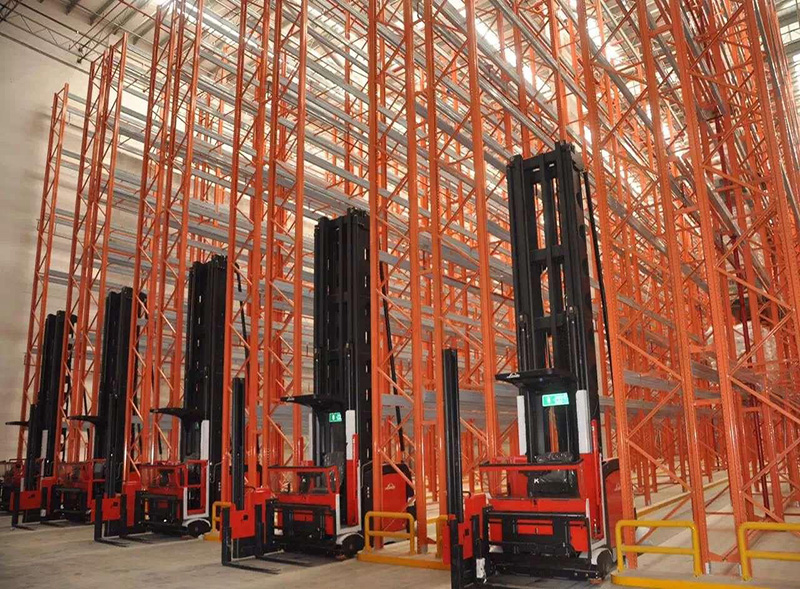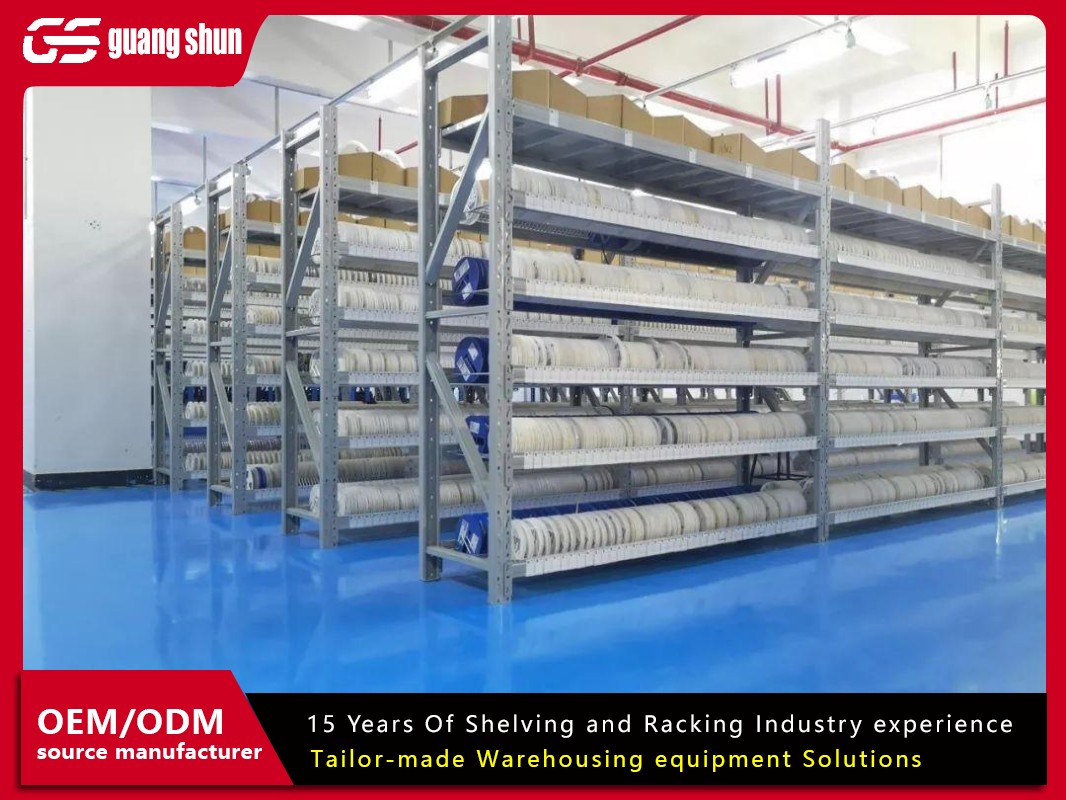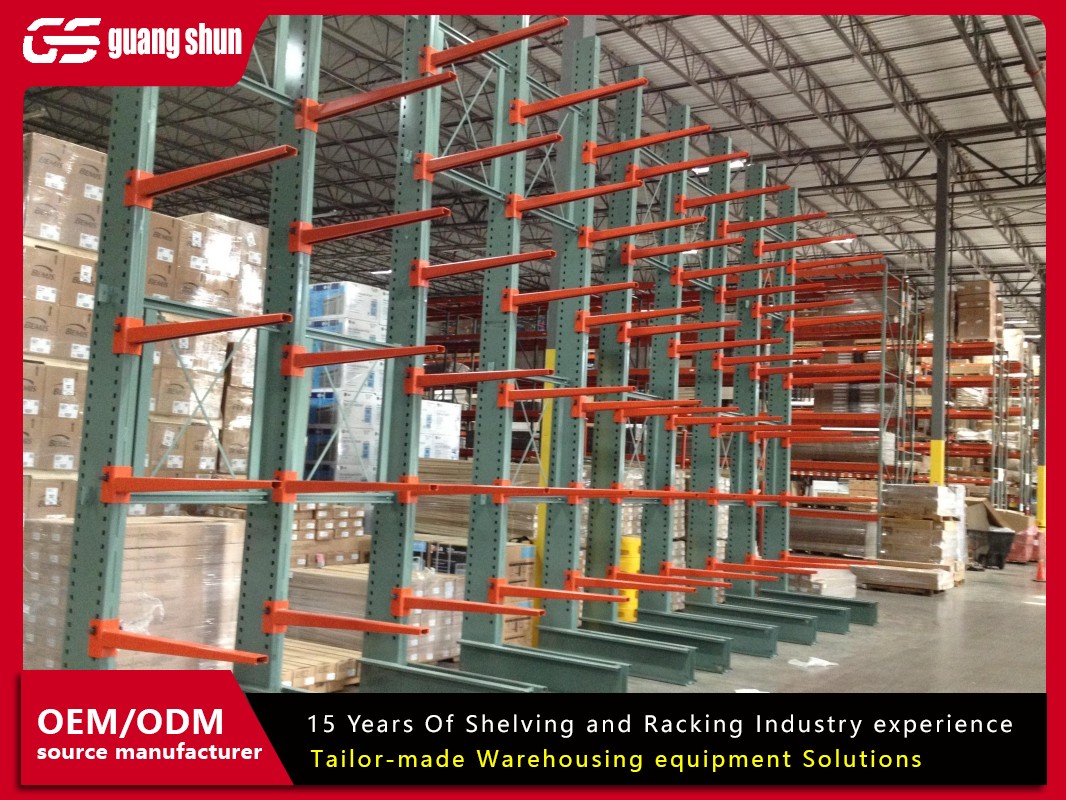In the fast-paced world of logistics and storage, efficient organization is crucial for productivity and safety. Warehouse shelves heavy duty are the backbone of many industrial and commercial storage systems, designed to handle substantial weights and withstand rigorous use. These robust shelving units are essential for businesses looking to maximize space, improve inventory management, and ensure long-term durability. Unlike standard shelves, warehouse shelves heavy duty are engineered with reinforced materials and advanced designs to support heavy loads, from pallets of goods to bulky equipment. In this article, we'll delve into seven critical aspects of warehouse shelves heavy duty, providing insights to help you make informed decisions for your storage needs. Whether you're setting up a new warehouse or upgrading existing infrastructure, understanding these factors can lead to significant cost savings and operational efficiencies.

What Are Warehouse Shelves Heavy Duty?
Warehouse shelves heavy duty refer to specialized storage systems built to endure high-capacity loads and harsh environments. Typically constructed from high-strength steel or other durable metals, these shelves feature reinforced beams, thick decks, and sturdy frames that can support weights ranging from a few hundred pounds to several tons per level. They are commonly used in industries such as manufacturing, distribution, and retail, where storing heavy items like automotive parts, machinery, or bulk inventory is routine. The design of warehouse shelves heavy duty often includes adjustable components, allowing for customization based on item size and weight. By investing in warehouse shelves heavy duty, businesses can reduce the risk of collapses, minimize product damage, and optimize vertical space, leading to a more organized and efficient workflow. This makes warehouse shelves heavy duty a smart choice for any operation requiring reliable, long-lasting storage solutions.
Benefits of Investing in Warehouse Shelves Heavy Duty
One of the primary advantages of warehouse shelves heavy duty is their ability to enhance storage capacity without occupying excessive floor space. By utilizing vertical height, these shelves allow businesses to store more items in a compact area, which is especially beneficial in urban settings where real estate costs are high. Additionally, warehouse shelves heavy duty improve safety by reducing clutter and preventing overloading incidents, thanks to their high weight ratings and stable structures. They also contribute to better inventory management, as items can be categorized and accessed easily, speeding up order fulfillment processes. Durability is another key benefit; warehouse shelves heavy duty are resistant to wear, corrosion, and impact, ensuring they last for years with minimal maintenance. This longevity translates to a lower total cost of ownership, making warehouse shelves heavy duty a cost-effective investment for growing businesses. Overall, incorporating warehouse shelves heavy duty into your storage strategy can boost productivity, reduce operational risks, and support scalability.
Types of Warehouse Shelves Heavy Duty Available
When selecting warehouse shelves heavy duty, it's important to understand the various types available to match your specific requirements. Pallet racking systems are a popular choice for warehouse shelves heavy duty, designed to store palletized goods with high weight capacities and easy access via forklifts. Another common type is cantilever shelves, which feature arms extending from a central column, ideal for long or bulky items like pipes or lumber. Shelving units with boltless designs offer quick assembly and reconfiguration, making them versatile for dynamic environments. Mezzanine shelves are another form of warehouse shelves heavy duty that create elevated platforms, doubling storage space in existing facilities. Each type has unique features, such as adjustable heights or specialized load distributions, so evaluating your inventory needs and workflow is essential. By choosing the right style of warehouse shelves heavy duty, you can optimize storage efficiency and adapt to changing business demands.
Materials and Construction of Warehouse Shelves Heavy Duty
The durability and performance of warehouse shelves heavy duty largely depend on the materials used in their construction. High-grade steel is the most common material, often coated with powder or galvanized finishes to resist rust, moisture, and chemical exposure. This ensures that warehouse shelves heavy duty can withstand demanding conditions in warehouses, such as humidity or temperature fluctuations. The beams and uprights are typically made from cold-rolled or structural steel, providing exceptional strength and stability. Some advanced models of warehouse shelves heavy duty incorporate reinforced bracing and welded joints to prevent sway and increase load capacity. It's also worth noting that the thickness of the steel—measured in gauge—plays a crucial role; lower gauge numbers indicate thicker, stronger materials. When sourcing warehouse shelves heavy duty, look for certifications like ANSI/MHIA standards to guarantee safety and quality. By focusing on robust materials, you can ensure that your warehouse shelves heavy duty deliver reliable performance over time.
How to Choose the Right Warehouse Shelves Heavy Duty for Your Needs
Selecting the appropriate warehouse shelves heavy duty involves assessing several factors to ensure they align with your operational goals. Start by evaluating your load requirements: calculate the maximum weight per shelf and overall capacity needed, considering both current and future inventory. Next, measure your available space, including ceiling height and floor layout, to determine the ideal dimensions for your warehouse shelves heavy duty. Consider accessibility—if frequent item retrieval is necessary, opt for designs with wide aisles or selective pallet racking. Budget is another key consideration; while warehouse shelves heavy duty might have a higher upfront cost, their durability often leads to long-term savings. Additionally, check for customization options, such as adjustable shelves or add-ons like safety nets, to enhance functionality. Consulting with a professional supplier can provide tailored advice for your specific industry, whether it's e-commerce or heavy manufacturing. By taking a systematic approach, you can invest in warehouse shelves heavy duty that maximize efficiency and support business growth.

Installation and Maintenance Tips for Warehouse Shelves Heavy Duty
Proper installation is critical for the safety and effectiveness of warehouse shelves heavy duty. Always follow manufacturer guidelines or hire certified installers to ensure the structure is level, secure, and capable of handling intended loads. During installation, use appropriate tools and hardware, and conduct load tests to verify stability. Regular maintenance is equally important to prolong the life of warehouse shelves heavy duty; inspect them periodically for signs of damage, such as bent beams or loose bolts, and address issues promptly. Cleaning the shelves to remove dust and debris can prevent corrosion and maintain appearance. It's also advisable to train staff on safe usage practices, like avoiding overloading and using equipment correctly for loading and unloading. By adhering to these tips, you can minimize risks and keep your warehouse shelves heavy duty in optimal condition, ensuring they continue to support your operations efficiently.
Cost Considerations and ROI of Warehouse Shelves Heavy Duty
While the initial investment in warehouse shelves heavy duty might seem substantial, it's essential to consider the long-term return on investment (ROI). High-quality warehouse shelves heavy duty reduce the need for frequent replacements, lowering overall costs over time. They also enhance operational efficiency by streamlining storage and retrieval processes, which can lead to increased productivity and reduced labor expenses. When budgeting, factor in additional costs like installation, maintenance, and potential accessories. Comparing prices from different suppliers and exploring bulk purchase discounts can help manage expenses. Moreover, warehouse shelves heavy duty can improve inventory accuracy and reduce loss due to damage, contributing to higher profitability. By viewing warehouse shelves heavy duty as a strategic asset rather than an expense, businesses can achieve significant savings and a stronger competitive edge in the market.
In conclusion, warehouse shelves heavy duty are indispensable for modern storage solutions, offering durability, flexibility, and enhanced safety. By understanding the key aspects covered—from types and materials to selection and maintenance—you can make informed choices that benefit your business in the long run. Investing in high-quality warehouse shelves heavy duty not only optimizes space but also supports sustainable growth and efficiency.
Frequently Asked Questions (FAQ)
Q1: What is the typical weight capacity for warehouse shelves heavy duty?
A1: The weight capacity for warehouse shelves heavy duty varies by model and design, but they can generally support loads from 1,000 to 10,000 pounds per shelf, depending on factors like material strength and configuration. Always check manufacturer specifications for exact ratings.
Q2: How do I assemble warehouse shelves heavy duty safely?
A2: To assemble warehouse shelves heavy duty safely, follow the manufacturer's instructions carefully, use proper tools, ensure the floor is level, and secure all bolts and braces. It's often recommended to hire professionals for installation to avoid accidents and ensure compliance with safety standards.
Q3: Can warehouse shelves heavy duty be customized for specific storage needs?
A3: Yes, many warehouse shelves heavy duty offer customization options, such as adjustable shelf heights, varied widths, and add-ons like dividers or locking mechanisms. This allows you to tailor the shelving to your unique inventory requirements.
Q4: What maintenance is required for warehouse shelves heavy duty?
A4: Regular maintenance for warehouse shelves heavy duty includes visual inspections for damage, tightening loose components, cleaning surfaces to prevent corrosion, and avoiding overloading. Scheduled professional checks can help identify potential issues early.
Q5: Are warehouse shelves heavy duty suitable for outdoor use?
A5: While warehouse shelves heavy duty are designed for indoor environments, some models with weather-resistant coatings can be used outdoors. However, exposure to extreme elements may reduce longevity, so it's best to consult suppliers for outdoor-rated options and take extra protective measures.







